
The capture of enslaved people took place in villages where prisoners of war from rival ethnic groups, victims of raids or those guilty of adultery, were bought by local merchants (such as Don Francisco de Souza, nicknamed “Chacha”) before being branded.
“Slave” whip West Africa,
19th century Wood and leather
Rouen, Natural History Museum - RMM, inv. ETHN.180514014,
Albert Vercoutre collection
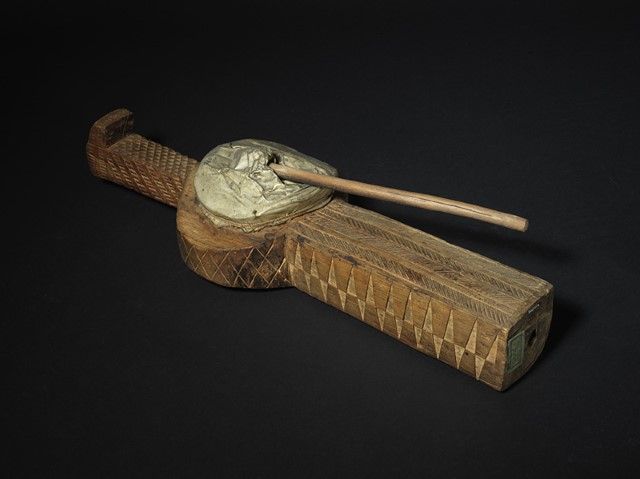
Human trafficking was highly organized, as in Danhomè (Dahomey, Benin), where weapons were specially made to capture individuals. Forge bellows were part of this system.
Forge bellows
Central Africa,
19th century
Wood and leather
Rouen, Natural History Museum - RMM, inv. ETHN.110000024,
Saints Frères collection
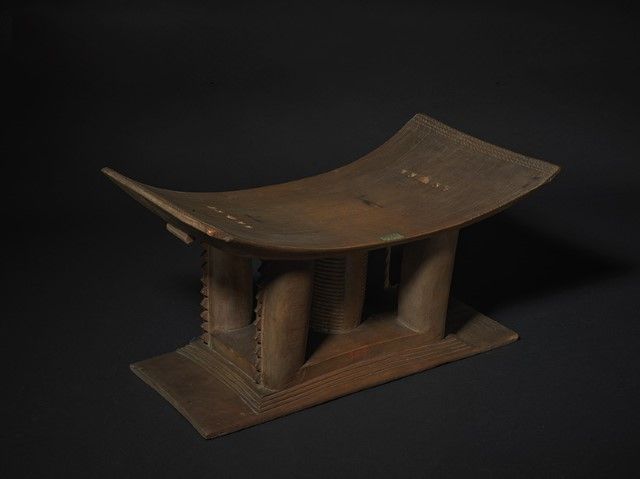
Europeans dealt directly with African intermediaries. On the Angolan coast, for example, the mafouk, the royal representative, had shops built on stilts with a palisade, called quibomgo. These were rented to Westerners to sell cheap items (glass, fabrics, weapons) in exchange for enslaved people at auction.
Benin chief’s seat,
19th century
Wood
Rouen, Natural History Museum - RMM, inv. ETHN 110000104
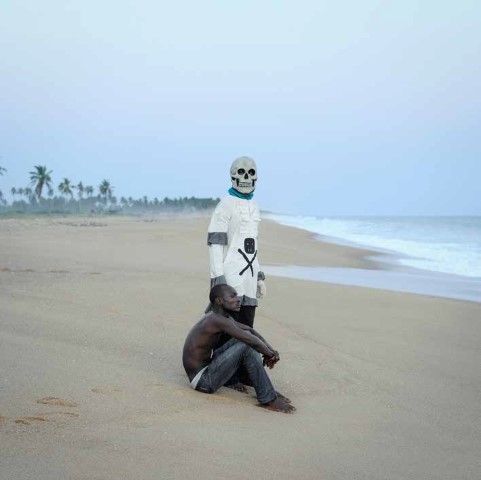
Every year, the Bourian festival celebrates the birth of the “Chacha”, the founder of the Afro-Brazilian community in Benin, Don Francisco Félix de Souza. De Souza was viceroy of Ouidah and one of the main slave traders in West Africa in the early 19th century. Inspired by the Brazilian carnival, the roles are reversed while consolidating the social hierarchy and power relationships within the family: the de Souza of enslaved descent temporarily wear the masks of the former de Souza masters. The “Dead Master” has a double role here, as both protector and oppressor for those who violate the internal hierarchy of the community.
LO CALZO, Nicola (1979-)
Gerardo De Souza and Death, after the Bourian ceremony
Ouidah beach, Benin, 2011
FineArt pigment print - Hahnemühle Baryta paper
Private collection of the artist
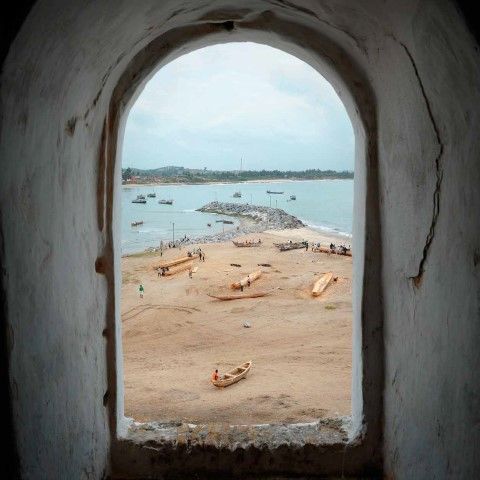
Explored from 1380 by natives (since 1830 by citizens) of Dieppe seeking spices and ivory, Mine, known as “Elmina” after the Portuguese occupation of 1482, became a major center for the slave trade. From 1637 to 1872, Elmina castle was the headquarters for Flemish settlers on the Gold Coast, before being used as a training center by the British in the 19th century. Since 1972, it has been managed by the Ghana Heritage Services and is a UNESCO World Heritage Site. As such, it is a renowned tourist site that bears witness to the reality of the Atlantic slave trade.
LO CALZO, Nicola (1979-)
View of the Elmina Castle dugout workshop,
Ghana
FineArt pigment print - Hahnemühle Baryta paper
Rouen, Musée Beauvoisine - RMM, inv. 2023.1 PHOT
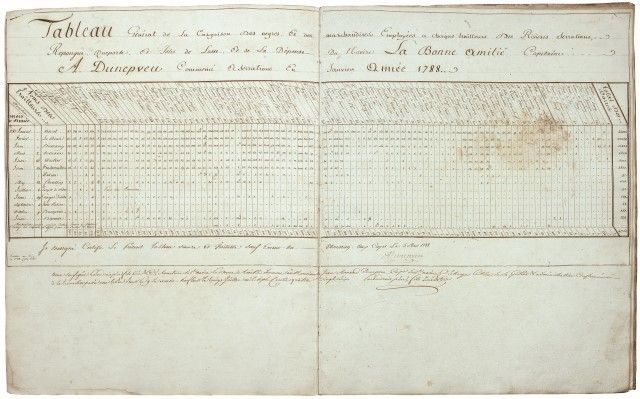
Ce tableau, dressé par le capitaine du navire après son arrivée à Saint-Domingue, donne la liste des courtiers avec lesquels il a traité en Afrique, dénombre les captifs embarqués à bord ainsi que les marchandises contre lesquelles on les a échangés.
Tableau général de la cargaison des nègres et des marchandises du navire la Bonne Amitié,
1786-1788,
registre manuscrit,
encre sur papier (44 feuillets), 55 X 84,5 cm,
musée de la Marine, Honfleur, inv.48.186,
don de la famille Toublet, 1975
©Illustria

Carte de la côte de Guinée
encre, aquarelle et gouache sur papier vergé, 74,5 X 53,5 cm
musée de la Marine, Honfleur, inv.Dess.39.111,
achat à la société normande de Géographie, Rouen, 1932
© Illustria
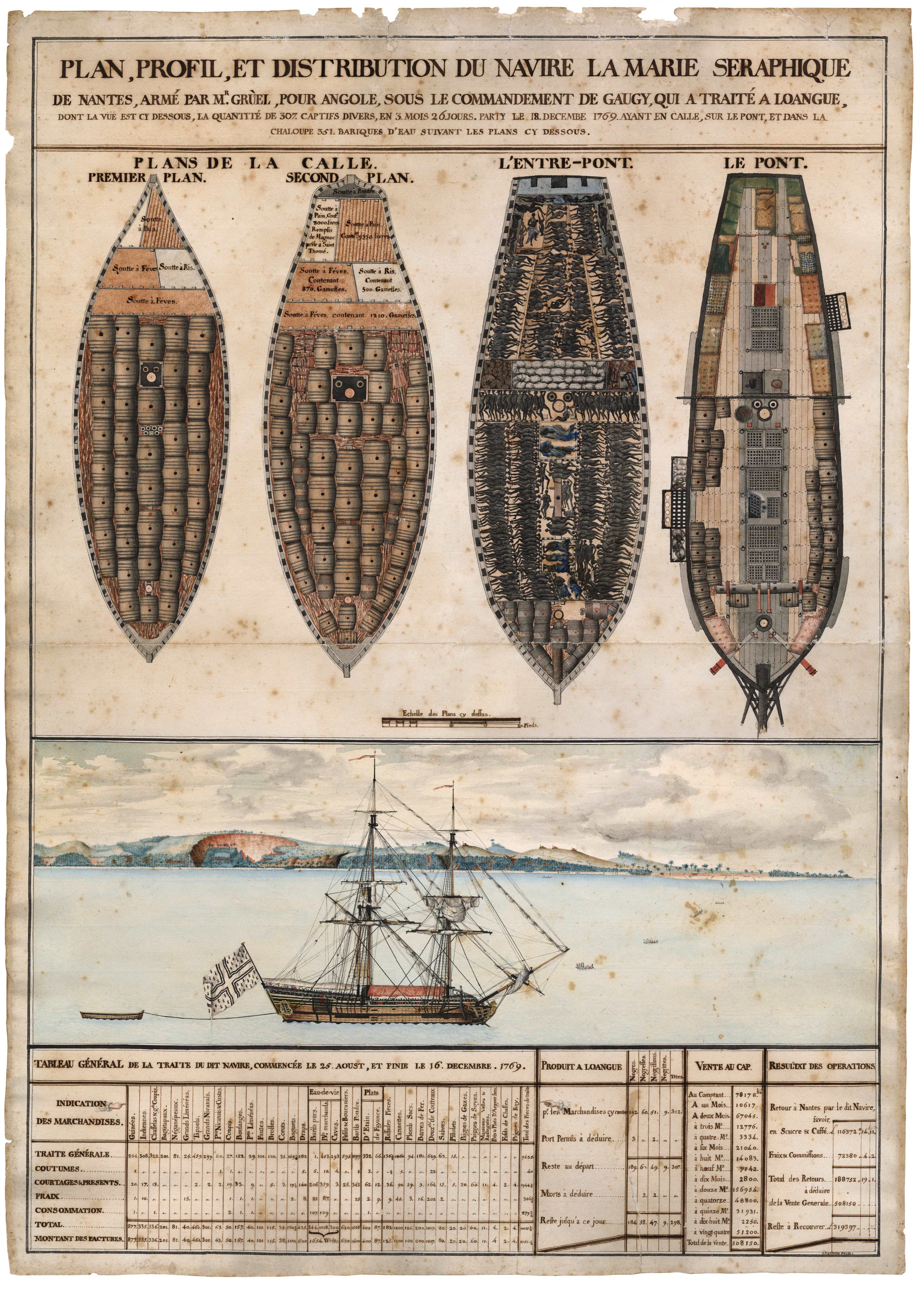
On December 16, 1769, Captain Jean-Baptiste Fautrel-Gaugy concluded the purchase period of his campaign on the African coast, aboard La Marie-Séraphine. Following shipowner Jacques Barthélémy Gruel’s prescriptions about the capacity of the ship and the time of the season, 312 people were bought: 192 men, 60 women, 51 boys and 9 girls. The journey could begin.
Notice : © Château des ducs de Bretagne – Musée d’histoire de Nantes
LHERMITTE René
Plan, profil et distribution du navire La Marie Séraphique de Nantes armé par Mr Gruel pour Angole, sous le commandement de Gaugy qui a traité à Langue, dont la vue est cy-dessous la quantité de 307 captifs (...)
[Plan, profile and distribution of the ship La Marie Séraphique of Nantes, fitted out by Mr Gruel for Angole, under the command of Gaugy who dealt with Langue, the view of which is below the quantity of 307 captives (...)]
Circa 1770
Watercolour and ink on paper, 74.6 x 53.4 cm
Château des Ducs de Bretagne - Musée d’Histoire de Nantes, INV 2005.3.1
Purchase supported by the FRAM
Crédit photo : © Château des ducs de Bretagne – Musée d’histoire de Nantes